A computer vision library for omnidirectional(360°) cameras. This package is divided into two parts:
- Basic functions for inter-conversion of different types of mappings associated with omni directional cameras, virtual reality and 360° videos, like cubemap, spherical projections, perspective projection and equirectangular projection.
- Software applications like 360° video viewer, fisheye image generator with variable intrinsic properties, GUI to determine fisheye camera paraeters.
This library has been developed with the following obectives:
- Quick and easy to use API to encourage and enhance the research in areas using omni directional cameras.
- To support real time applications.
- Provide extensions in python as well as C++ as they are the languages used by researchers.
- Provide ROS package to use in robotics research.
Click here to know more about omni directional cameras
- Detailed examples and application notes to understand how to use the package.
- Installation guide for
- Python version
- C++ version
- ROS packge
- Detailed documentation.
Some interesting 360° video effects
| Arround the world effect | Hollow world effect |
|---|---|
 |
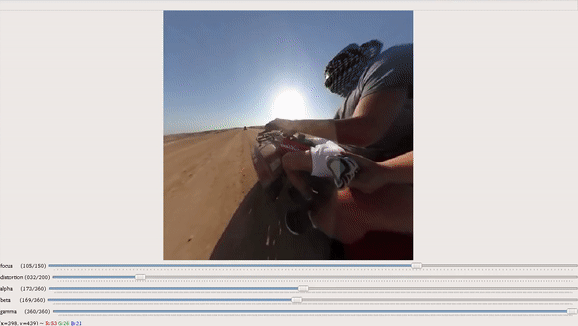 |
Creating custom fisheye images
| Equirect2Fisheye | Custom image using GUI |
|---|---|
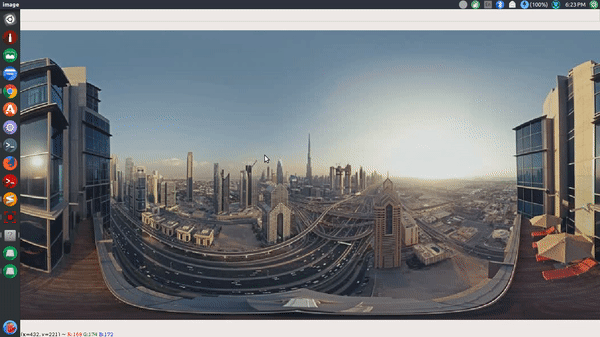 |
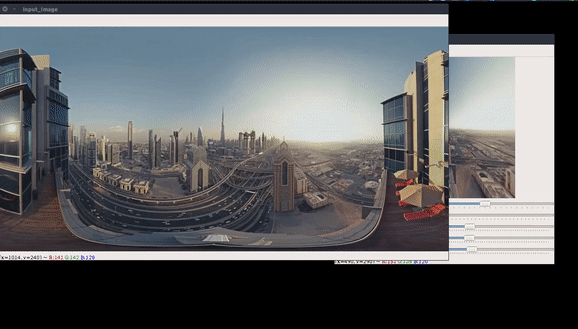 |
GUI to determine fisheye camera parameters
| GUI to get radius | GUI to get fisheye params |
|---|---|
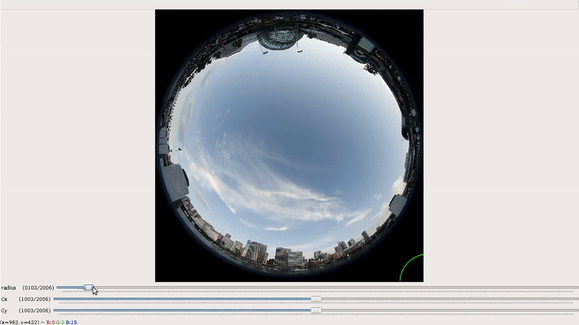 |
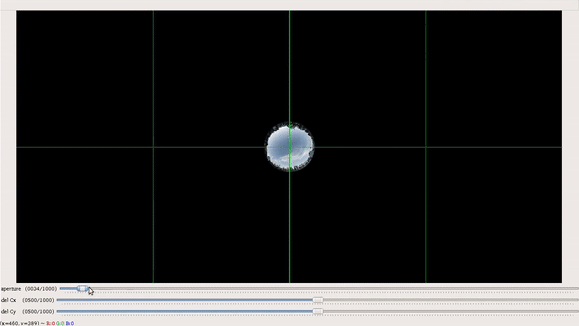 |
Horizontal and vertical orientation viewing mode support
| 360° viewer mode 1 | 360° viewer mode 2 |
|---|---|
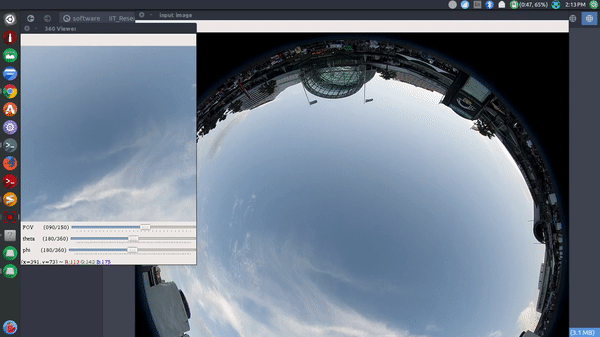 |
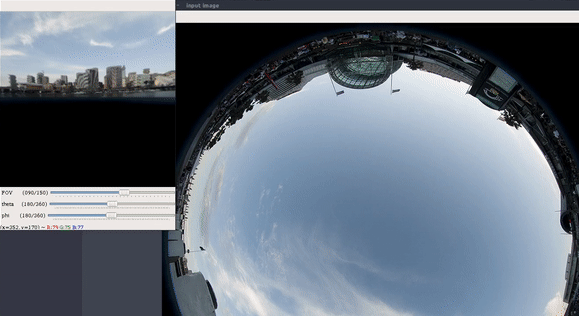 |
- Types of omni directional cameras
- Examples
- Equirectangular image to fisheye or pinhole camera image.
- Fisheye image to equirectangular image.
- Equirectangular image to cube map image (horizontal or dice format)
- Convert cube map image (horizontal or dice format) to equirectangular image.
- Convert equirectangular image to perspective image with desired field of view and viewing angles.
- Convert cubemap image to perspective image with desired field of view and viewing angles.
- Application notes
- GUI to control focus, distortion and view orientation to generate different kinds of distortion effects and get images with different properties.
- GUI to determine fisheye camera parameters like aperture and fisheye radius for further conversions.
- GUI to view an equirectangular image in 360° format with control trackbars to change FOV(Field Of View) and viewing angles. (You can download any 360° video from youtube and view it using the GUI and enjoy the 360° viewing experience).
A custom make file has been written which provides quick and easy options for installing and testing the library.
git clone https://github.com/kaustubh-sadekar/OmniCV-Lib
cd OmniCV-Lib/omnicv/
# To build c++ as well as python files
make build-all
# To build only python files
make build-python
# To build only c++ files
make build-cppInstalling OmniCV in a virtual environment using pipenv. Pipfile and Pipfile.lock files have been provided. Copy both the files to the present working directory. Then simply run the following commands to setup OmniCV in a local environment.
pipenv install
pipenv shell cd OmniCV-Lib/omnicv/
# To test only python extension of the project
make test-py
# To test only c++ extension of the project
make test-cpp
# To test python as well as c++ extension of the project
make test-allTo build the ROS nodes follow these steps:
- Create a folder named omnicv in your ros workspace where you have your other ros packages
roscd src/
mkdir omnicv- Add the contents present inside ros_files folder to the omnicv folder created in the previous step.
- Build the workspace.
cp OmniCV/ros_files/ [PATH TO ROS WORKSPACE]/src/omnicv/
roscd
catkin_make